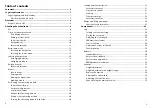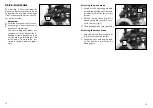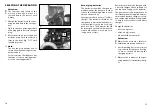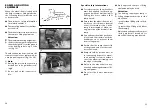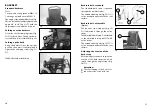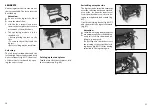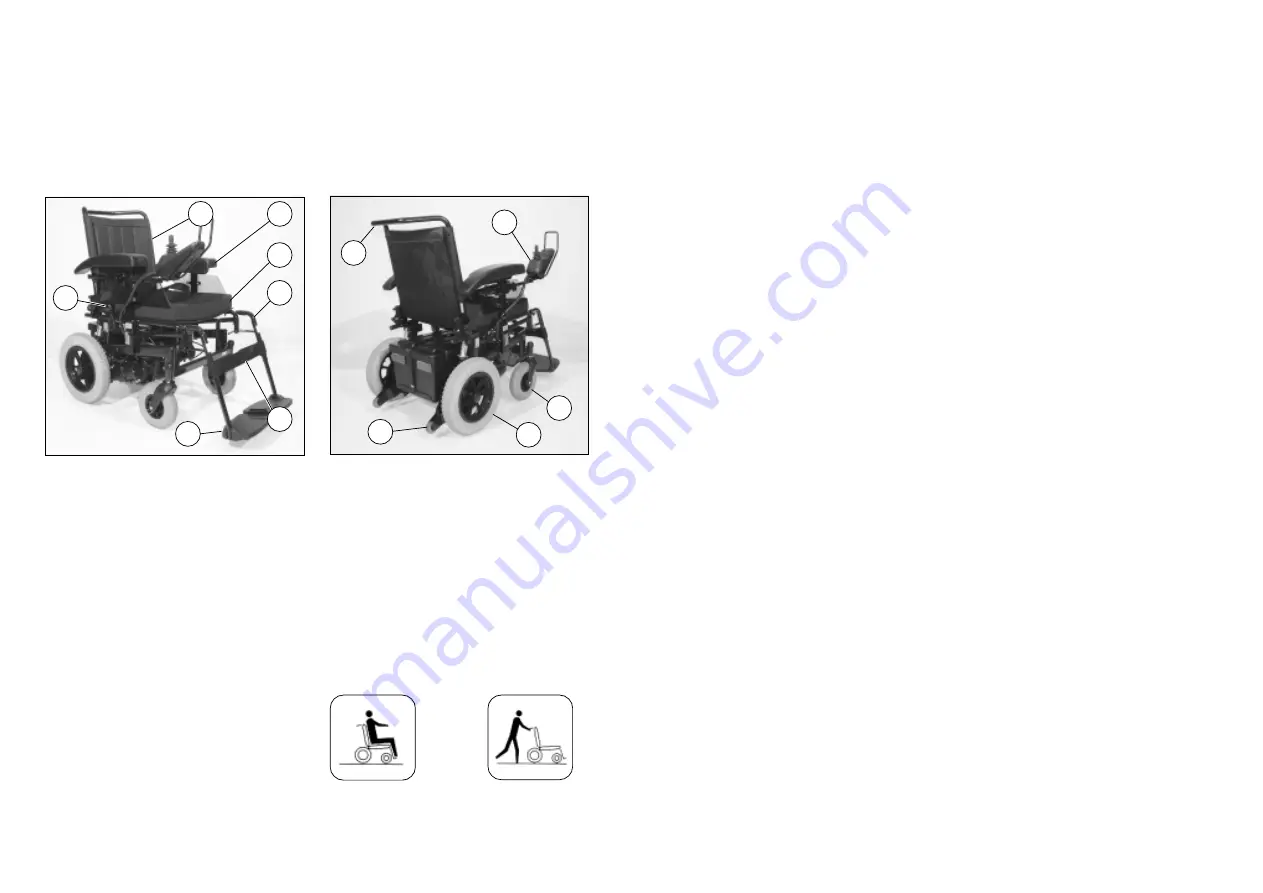
9
8
HANDLING THE
WHEELCHAIR
USE
The electric wheelchair, with attached
legrests and armrests, serves exclusi-
vely for the conveyance of one sitting
person. Other pulling or transporting
uses do not comply with its intended
purpose.
!
Attention:
Observe the brochure <
Safety in-
formation electronic vehicles
>!
This model is a wheelchair which is
intended for use indoors and outdoors
on a firm driving surface. It is assigned
to the user class B according to the
norm EN12184. Before use on outdoor
public routes the electronic wheelchair
is to be fit with an optionally availa-
ble lighting jig.
Depending on the foot plate height
adjustment it can cross obstacles with
a max. height of 50 mm.
Higher obstacles up to 110 mm high
can be crossed with a “step climber”.
TIPS FOR ACCIDENT PRE-
VENTION
First driving exercises
A low maximum speed must be pre-
selected on the control unit for the
initial driving practice. Make yourself
familiar with the driving behaviour of
the electric wheelchair in small steps.
The electric wheelchair should not be
used outside of the familiar environ-
ment or on public highways before
you have a safe control of the vehicle.
Driving in street traffic
The Highway Code must be complied
with when driving on public high-
ways. Before starting to drive the re-
quired lighting jig is to be checked for
function. Carry out a short braking and
steering test after the start of motion
at a very low speed.
OVERVIEW
MODEL: 1.445 / 9.505
The overview (fig. 1 and 2) shows the important components and control devic-
es of the wheelchair.
➀
Operating module
➁
Swivel wheel
➂
Driving wheel
➃
Support wheel
➄
Push handle
➀
Backrest
➁
Armrest unit
➂
Seat cushion (option)
➃
Legrests
➄
Calf strap
➅
Footrest
➆
Selection lever for drive mode
push mode
1
2
Push mode
Drive mode
5
3
4
6
4
2
1
3
1
2
5
7


